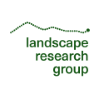Leaving Marks and Names on the Land: The Deeds of Tama Ki Te Rangi, Tamatea-Pōkai-Whenua, Te Rakiwhakaputa and Rākaihautū
DOI:
https://doi.org/10.34900/lr.v19i1.1191Abstract
Stories of first explorations and the naming of landmarks, boundaries and resources by a renowned tipuna (ancestor) feature in most Māori pūrākau (oral traditions). The first explorer sets out captaining their great waka (ocean-going canoe), fighting battles with monsters or other explorers, enduring hardship to traverse the land and discover, name or create geographical features on their journey. In this way, the intrepid pioneer declares and defines the boundaries of the takiwā (area of responsibility) of their iwi (tribe), metaphorically throwing a korowai (cloak) of their mana (prestige or honour) and responsibility over the new whenua (land), embedding their nomenclature, collective tribal mauri (spirituality), traditions and whakapapa (genealogies) into the lands they anticipate their peoples will settle.
Naming confers the status of mana whenua (local people), but in the Māori (Indigenous New Zealander) world, it confers much more than that. Naming, especially when done by a prominent leader or explorer, is the step that sees the recent settlers accept the role of kaitiaki (guardian) for the environment of their new home, as well as the resources it can produce.
In this paper, I examine the deeds of the explorers of the past, comparing the kaupapa (methodology) of name-giving with the arbitrary nomenclature systems of settler surveyors and explorers in the nineteenth century, revealing the stories behind each original name and offering reasons for recognising them today.
Downloads
Downloads
Published
How to Cite
Issue
Section
License
Authors who publish with this journal agree to the following terms:- Authors retain copyright and grant the journal right of first publication with the work simultaneously licensed under a Creative Commons Attribution License that allows others to share the work with an acknowledgement of the work's authorship and initial publication in this journal.
- Authors are able to enter into separate, additional contractual arrangements for the non-exclusive distribution of the journal's published version of the work (e.g., post it to an institutional repository or publish it in a book), with an acknowledgement of its initial publication in this journal.
- Authors are permitted and encouraged to post their work online (e.g., in institutional repositories or on their website) prior to and during the submission process, as it can lead to productive exchanges, as well as earlier and greater citation of published work (See The Effect of Open Access).



